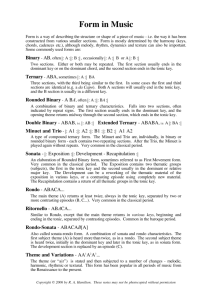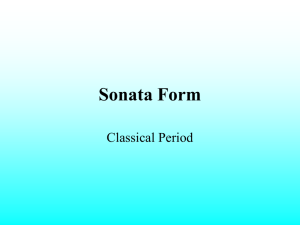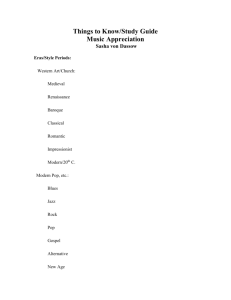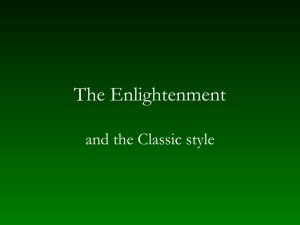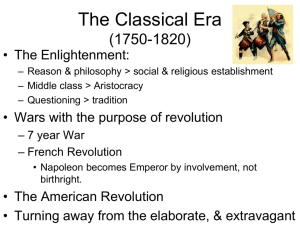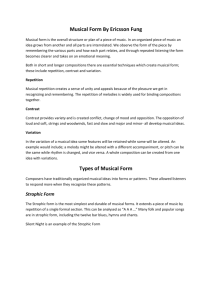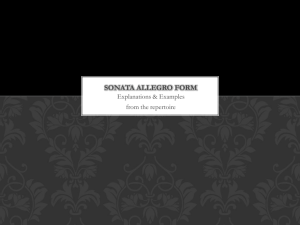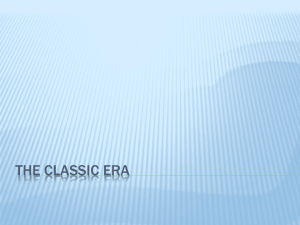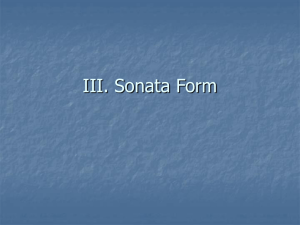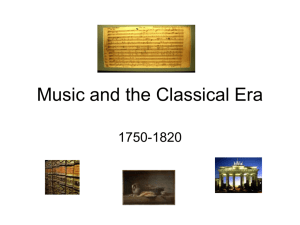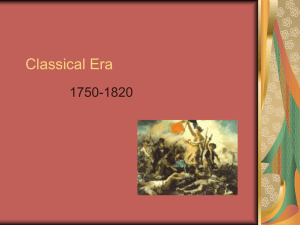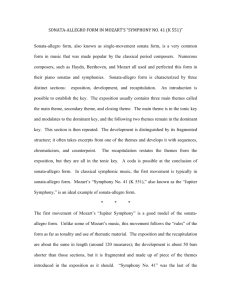Terms and Definitions – March 1
advertisement
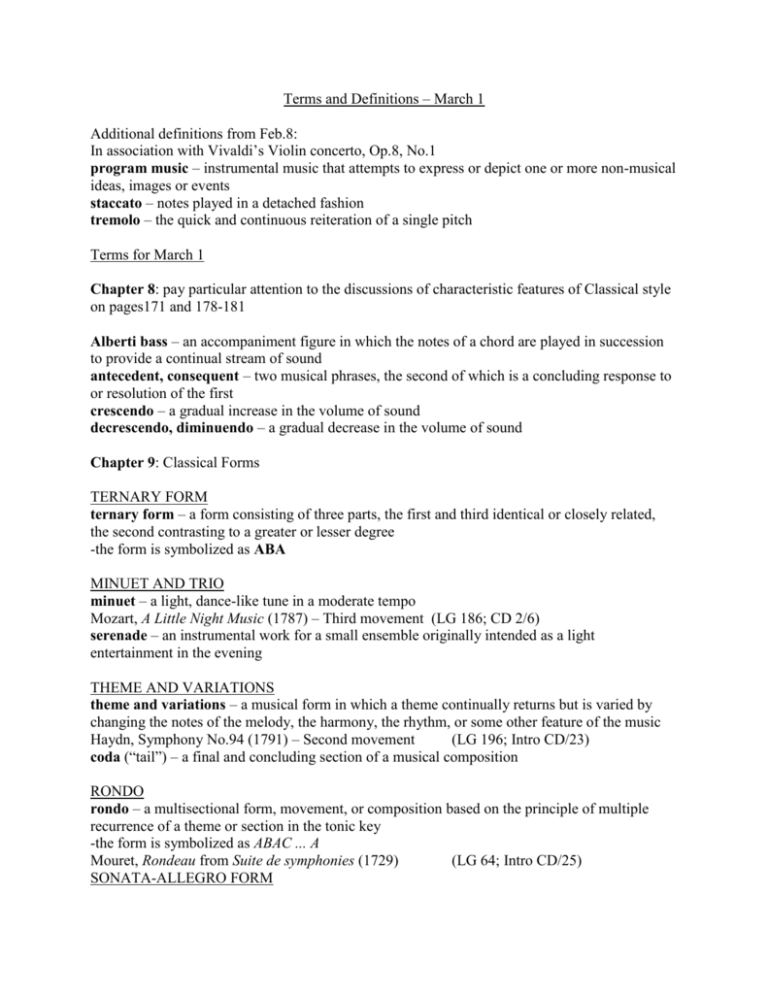
Terms and Definitions – March 1 Additional definitions from Feb.8: In association with Vivaldi’s Violin concerto, Op.8, No.1 program music – instrumental music that attempts to express or depict one or more non-musical ideas, images or events staccato – notes played in a detached fashion tremolo – the quick and continuous reiteration of a single pitch Terms for March 1 Chapter 8: pay particular attention to the discussions of characteristic features of Classical style on pages171 and 178-181 Alberti bass – an accompaniment figure in which the notes of a chord are played in succession to provide a continual stream of sound antecedent, consequent – two musical phrases, the second of which is a concluding response to or resolution of the first crescendo – a gradual increase in the volume of sound decrescendo, diminuendo – a gradual decrease in the volume of sound Chapter 9: Classical Forms TERNARY FORM ternary form – a form consisting of three parts, the first and third identical or closely related, the second contrasting to a greater or lesser degree -the form is symbolized as ABA MINUET AND TRIO minuet – a light, dance-like tune in a moderate tempo Mozart, A Little Night Music (1787) – Third movement (LG 186; CD 2/6) serenade – an instrumental work for a small ensemble originally intended as a light entertainment in the evening THEME AND VARIATIONS theme and variations – a musical form in which a theme continually returns but is varied by changing the notes of the melody, the harmony, the rhythm, or some other feature of the music Haydn, Symphony No.94 (1791) – Second movement (LG 196; Intro CD/23) coda (“tail”) – a final and concluding section of a musical composition RONDO rondo – a multisectional form, movement, or composition based on the principle of multiple recurrence of a theme or section in the tonic key -the form is symbolized as ABAC ... A Mouret, Rondeau from Suite de symphonies (1729) (LG 64; Intro CD/25) SONATA-ALLEGRO FORM sonata-allegro form – a dramatic musical form of the Classical and Romantic periods involving and exposition, development and recapitulation, with optional introduction and coda -you will need to become familiar with the individual sections of the sonata-allegro form; study closely the discussion and diagram found on pages 188-190 Mozart, A Little Night Music (1787) – First movement (LG 191; CD 2/5) FOUR-MOVEMENT STRUCTURE Movement Form Key I II Sonata Aria or Sonata or Theme and Variations Minuet and Trio Rondo or Sonata Tonic Dominant or Subdominant or Relative minor Tonic (Trio is sometimes in different key) Tonic III IV
